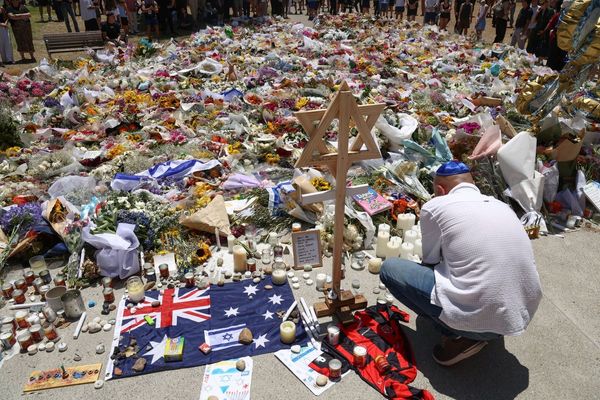
Wildlife advocates are calling for a halt to the commercial harvesting of kangaroos in Victoria’s Grampians region after bushfires there.
Wildlife Victoria warned of “long-term impacts” on native plants and animals due to the fires, which burned through 76,000 hectares of national park and farmland, and called for a stop to the controversial practice until the impact on kangaroo populations could be fully assessed.
While some ecologists agreed, citing precaution, others supported commercial culling as a strategy to aid the recovery of plants and smaller mammals.
Australian mainland states permit the killing of nearly 5 million kangaroos annually as part of an industry that supplies meat and leather products for sale in Australia and for export. The practice is contentious locally and abroad, with some US states and sports brands stopping the import and use of kangaroo products.
In Victoria new harvest quotas applied from 1 January, allowing for more than 106,000 grey kangaroos to be culled annually, including more than 32,000 in the Grampians and Barwon south-west harvest zones, which were partly impacted by the fires. The state government estimated that the population in the two zones was 646,000.
Wildlife Victoria’s chief executive, Lisa Palma, said kangaroo harvesting should be discontinued in the Grampians “until there is a greater understanding of the immediate and potential long-term impacts of the fire on kangaroo populations”.
“We also renew concerns regarding the setting of quotas, the lack of program oversight and the inherent cruelty of the practice,” she said.
The Grampians has experienced a string of relatively large bushfires since 2006, which an independent ecologist, Dr Holly Sitters, said was “bad news for kangaroos but particularly bad news for small mammals that show an overwhelming preference for areas that haven’t been burnt in a long time”.
Sitters, who has researched the impact of fire regimes on mammals, said smaller, patchy fires could benefit kangaroos and other large mammals but large and intense blazes, like those in the Grampians, were a different story.
“Some animals are able to move out of the way of the fire, whereas others may become injured or killed,” she said. “Then during the weeks and months following the fire, some animals will survive, others will struggle to find sufficient food.
“For example, it was estimated that 200,000 kangaroos and wallabies were killed as a result of the black summer fires.
“Dry weather can also make it much more difficult for animals to survive the period shortly after fire, because vegetation recovers more slowly.”
Dr Euan Ritchie, professor of wildlife ecology and conservation at Deakin University, said the relationship between fire and grazing animals was complex, and commercial harvesting of kangaroos could be beneficial in some circumstances.
Ritchie said the removal of the kangaroos’ natural predator – the dingo – meant that their numbers could quickly escalate after bushfires, particularly during wet conditions.
Overgrazing by kangaroos and other introduced herbivores such as deer and goats limited the recovery of native vegetation, he said, which native animals relied on for food and shelter.
In the absence of natural regulation – human hunting, which occurred in the past, and dingoes – commercial harvesting of kangaroos was “probably the best solution that we have at the moment”, weighing ecological and welfare benefits, he said.
The state’s environment department has been assessing the impact of the Grampians fires on wildlife but has not proposed any changes to the kangaroo harvesting program.
“Wildlife response activities in the Grampians commenced as soon as it was deemed safe to do so,” a department spokesperson said. Those included Parks Victoria staff dropping more than 50 emergency food packages for the critically endangered southern rock wallaby.
Sitters said kangaroo harvesting should not go ahead in areas surrounding the Grampians national park and the “precautionary principle” should apply until a thorough assessment was undertaken.
“Given the rapid and unprecedented rates of environmental change, I don’t think we can afford to take anything for granted. Common species can become rare quickly. So I think this is a time to take proactive steps to protect kangaroos from threats and ensure that future generations can enjoy seeing kangaroos in our landscapes.”
• This article was amended on 14 January 2025 to remove a reference to Wildlife Victoria warning of “catastrophic” impacts. The quote was introduced in error.







